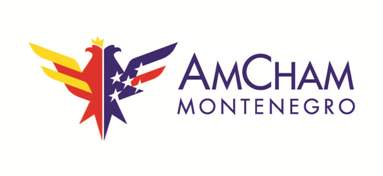
12
2020Digital banking evolution in Montenegro
Author: Saša Šćekić, member of AmCham Digital Committee
Not a penny in the pocket! The original meaning of this metaphor, which once depicted depths of personal poverty and financial abyss, is now almost but faded away. Actually, it has long had the opposite meaning in Norway, Sweden and other European countries north and west from here – where key social topic is how to improve one’s well-being. It refers to cashless payments – shifting of personal finances out of the pocket and into the digital zone.
Not having a smartphone in your pocket these days, now that is a problem. Mobile phone became a central hub that connects the user to digital services and enables him to consume information in real time, to make purchases online, book airline tickets, plan holidays. Signing up for mobile apps and digital services is quick and easy – it takes only a few taps. If a customer is not satisfied with specific service, then he can switch to another just as fast. This is the era of digital consumerism built by Amazon, Google, Facebook and other IT giants. The expectation is that everything is simple, accessible and fast – purchasing a theater ticket, paying your phone bill or paying off a loan. Nowadays the awareness has grown to the point that we want it to be secure as well.
Banks and other financial institutions around the world have had to adapt to this new reality and invested significant resources in the past decade in the development of digital banking. There has been an exponential growth in the number of digital financial services and companies outside of the financial sector that offer these services to customers. In order to meet customer expectations and prevent churn, banks have been rapidly introducing omni-channel digital banking solutions – enabling them to offer a wide range of services across all digital channels in a consistent, simple and secure manner. Having necessary legal frameworks in place and high degree of internal processes automation, enabled banks operating in these markets to provide to their customers much more than just transactional services. A citizen can use digital banking channel to register and open and account in a bank, create term deposit, request a credit card, get a loan or some other product.
Creating a cashless society has become one of the primary objectives in these markets. In Sweden, more than 80 percent of payments are electronic, more than half of the banks do not support cash withdrawal or cash payments, while the goal is to eliminate the cash completely by 2023. Changes are evident even in traditionally cash societies – such as Germany – where for the first time in 2018, electronic payments have exceeded 50 percent. Developed regulatory frameworks and infrastructure supporting contactless payments as well as instant money transfer between banks in the country and abroad, have led to the expansion of services that can be paid electronically. On the other side, customer expectations for easy and safe way of making these payments have grown as well. In order to meet the demand in these markets, next to already established online and mobile banking solutions, banks have implemented mobile wallets and contactless payments for mobile phones and other portable devices.
Accelerated development on these markets lead to emergence of fully digital banks – so called neo-banks – such as: American Simple, British Revolut and German N26. These challenger banks are now present even in Montenegrin neighborhood, with Telenor Bank (now Mobi Bank) in Serbia and very successful Revolut in Croatia. Their presence has pushed traditional banks to accelerate on their path to digital transformation and further raise the quality of their digital products and services.
 Digital banking development in Montenegro began almost 20 years ago, with emergence of first payment cards. Five years later, banks began to introduce first digital solutions – Internet Banking and SMS services – while additional five years had to pass before first eCommerce solutions were introduced, thus enabling companies to offer online shopping services to customers. In last three years things have been changing much faster and more frequently. We are witnessing accelerated digital transformation of banking and society in overall. Montenegrin banks have made digital banking part of their strategic priorities and allocated significant funds to support it. We’ve seen introduction of modern online and mobile banking solutions, mobile wallets and various forms of mobile payments, online chat, pre-application for loans and other products. Finally, a demand has grown with customers who expect and want to use modern digital banking solutions and are ready to replace the branch with the mobile application.
Digital banking development in Montenegro began almost 20 years ago, with emergence of first payment cards. Five years later, banks began to introduce first digital solutions – Internet Banking and SMS services – while additional five years had to pass before first eCommerce solutions were introduced, thus enabling companies to offer online shopping services to customers. In last three years things have been changing much faster and more frequently. We are witnessing accelerated digital transformation of banking and society in overall. Montenegrin banks have made digital banking part of their strategic priorities and allocated significant funds to support it. We’ve seen introduction of modern online and mobile banking solutions, mobile wallets and various forms of mobile payments, online chat, pre-application for loans and other products. Finally, a demand has grown with customers who expect and want to use modern digital banking solutions and are ready to replace the branch with the mobile application.
Largest Montenegrin banks today offer similar core functionalities within their online and mobile banking solutions. These include overview of checking accounts, loans, deposits and cards, domestic and cross-border (SWIFT) money transfers, currency conversions and so on. Next to this now we are seeing even some cutting-edge solutions keeping the pace with Europe’s most developed markets. CKB was the first to introduce the CKB GO omni-channel digital banking solution that offers unified application design across channels, with advanced features like Personal Finance Manager (PFM), biometric login, possibility to make a term deposit, manage payment card limits and statuses in real-time, make mobile top-up payments and direct debits, etc. Podgorička bank launched SMS Konto service enabling monthly bill payments via SMS channel. Several banks modernized their mobile banking applications, delivering faster and simplified mobile payment options. Erste and Addiko apps now use OCR to automatically prefill payment orders. Erste introduced ePayment where the client can see and confirm the amount of the monthly bill, while CKB introduced money sharing and bill payment via QR code. CKB also recently introduced Apple Pay service, marking the arrival of world’s largest tech company to Montenegro. It’s quite a big moment for one of the smallest countries in Europe, kind of a milestone in the evolution of digital banking. In addition to the additional popularization of mobile payments and cashless payments in general, launch of Apple Pay in Montenegro can be seen as a roadmap for other major companies to introduce their own digital services to our market.
We are witnessing some very positive changes today, but also coming to realize new complex tasks that are in front of Montenegrin banks. According to the latest Central Bank of Montenegro (CBM) data published by local media, in early 2019, just over 71,000 citizens and companies have been using electronic banking. Considering the data on the number of employees and pensioners from the Monstat’s statistical yearbook, one could conclude that the penetration of electronic banking in Montenegro is around 20%. Given the history, this can be considered as a good result, however the fact is that it is still well below the average of developed European countries. In Croatia and Slovenia, penetration is twice as high, in Austria, Germany and France it is about 60%, while 9 out of 10 Norwegians perform their banking digitally. Statistics on the side, there are compelling reasons to have positive projections and estimate that 50% of banking customers in Montenegro will become digital within a few years. This is grounded on increasing investments in digitalization and the upward trend that banks are reporting year after year, as well as increasing number of younger (mode digital) customers, reaching the employment age.
 We should see banks focusing on further development of digital banking applications, with user experience as one of the main objectives. This means simplified UI, without banking terminology and functionalities that are not necessarily related to banking but are adding value for the customers everyday life. Mobile payment services will have a significant place in this evolution. Central Bank of Montenegro is currently investigating feasibility of instant payments implementation – based on models and experiences from Serbia and Slovenia. Introduction of this technology in Montenegro would further popularize payments via mobile banking applications. The Apple Pay service which CKB supported recently will also be an implementation task for other Montenegrin banks. In the wake of Apple’s arrival, other world players will come. We can also expect focus on additional digitization and automation of business processes. This will be equally important for the user experience and digital sales of banking products and services. These efforts will benefit from development of legislation related to electronic identification and electronic signature, as well as regulatory framework and supporting infrastructure for access to digital data registers. Banks will be able to electronically identify the customer, obtain the necessary approvals, access the Credit Bureau Registry, the Tax Administration and the Pension Fund – and then, on the basis of the collected data, automatically approve the request for loan, payment card, or any other product, without the customer having to visit the branch.
We should see banks focusing on further development of digital banking applications, with user experience as one of the main objectives. This means simplified UI, without banking terminology and functionalities that are not necessarily related to banking but are adding value for the customers everyday life. Mobile payment services will have a significant place in this evolution. Central Bank of Montenegro is currently investigating feasibility of instant payments implementation – based on models and experiences from Serbia and Slovenia. Introduction of this technology in Montenegro would further popularize payments via mobile banking applications. The Apple Pay service which CKB supported recently will also be an implementation task for other Montenegrin banks. In the wake of Apple’s arrival, other world players will come. We can also expect focus on additional digitization and automation of business processes. This will be equally important for the user experience and digital sales of banking products and services. These efforts will benefit from development of legislation related to electronic identification and electronic signature, as well as regulatory framework and supporting infrastructure for access to digital data registers. Banks will be able to electronically identify the customer, obtain the necessary approvals, access the Credit Bureau Registry, the Tax Administration and the Pension Fund – and then, on the basis of the collected data, automatically approve the request for loan, payment card, or any other product, without the customer having to visit the branch.
Branches will continue to play a key role in customer relationship and trust – as indicated by experiences of much more developed countries. According to a 2019 Deloitte survey, more than 60% of clients in France, Spain, Japan, Germany and other developed countries prefer to go to a branch in order to open an account or take a mortgage loan, over applying via digital channels. Customers voiced that they are less likely to trust a bank offering digital channel as the sole communication point, and where they cannot reach a real live person and discuss, face to face, about the problem they are having or some big, life altering decision they are considering. As digital transformation progresses, and payments and other services get migrated to digital channels, branches will need to change as well. Montenegrin banks will have an important task of transforming their branches from primary transactional to advisory role, as well as demonstrating to the clients that this change is a new quality and added value to their banking experience.








